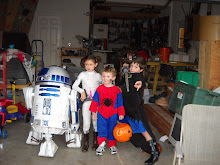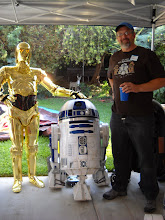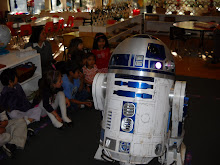
I have been very busy on the feet lately. There has been some frustration and some success.
I pondered my choice of materials for a long time. As I see it, one could build the feet from aluminum--either welded or JB welded like Dan Baker's, or steel with spot welding, or wood, or plastic. After much back and forth, I settled on plastic. I liked what I saw on Victor Franco's blog about their feet, and the PVC looked like it was good to work with.
When I got to Interstate Plastics, it looked like ABS plastic in 1/4" was as stiff and just as good for my purposes and cheaper, so I bought a sheet of that. It was cheap--maybe $50 --can't remember.
It turns out that ABS--and I should have foreseen this--has a pretty low melting point and it smears and gums up when you saw or sand it if you don't do it just right. Very touchy stuff. If I had really thought it through, I would have seen that because ABS is the same stuff, in thinner sheets, that they use to do vacuum forming. There you heat up a sheet on a frame, force it down over a positive mold, suck the air out and let it cool. My brother's working on a snow trooper this way.
But after some fiddling around, I got the hang of it. And I have to say that all of the trapezoids with compound angles on the feet are really complicated. I botched a few and worked on it for a while, but in the end I got the pretty tight clean joints I wanted.
That's a piece of 3" (inside diameter) PVC cut into quarters that I used for the inside curve that goes under the battery boxes. Also notice that I put the edges of the pieces exposed on the outside--on the channel for the legs for instance, so that I could get to them and sand them easily.
By far, the trickiest parts were getting the bottom skirts right.

Some people seem to have left these off of there R2s, or they have not included the lip that is underneath the strip with the rectangular cutouts, or otherwise altered the plans. I was pretty determined to get this part as close to spec as I could. Eventually, after making piles of scrapped, failed attempts, I cut strips with bevels on both edges, then I carefully glued up a rectangle that was .08 narrower than the tops of the feet. That way, when I glued on the strips with the rectangle cutouts, the pieces would line up with the tops. Sorry I don't have pictures of these steps--my wife cleared the camera. After a lot of sanding and gluing, I was able to more or less accurately join the bottom skirts with the top trapezoids. In the picture you're seeing them before sanding, filling, or repairing. In general I want to get as much done with the saw and the cutting so that I don't have to do a lot of hacking, carving, puttying, and sanding latter. Sanding is dehumanizing, even with my killer 220 volt, 6" x 48" belt sander. I think that with some more work, these will clean up and look nice.








No comments:
Post a Comment